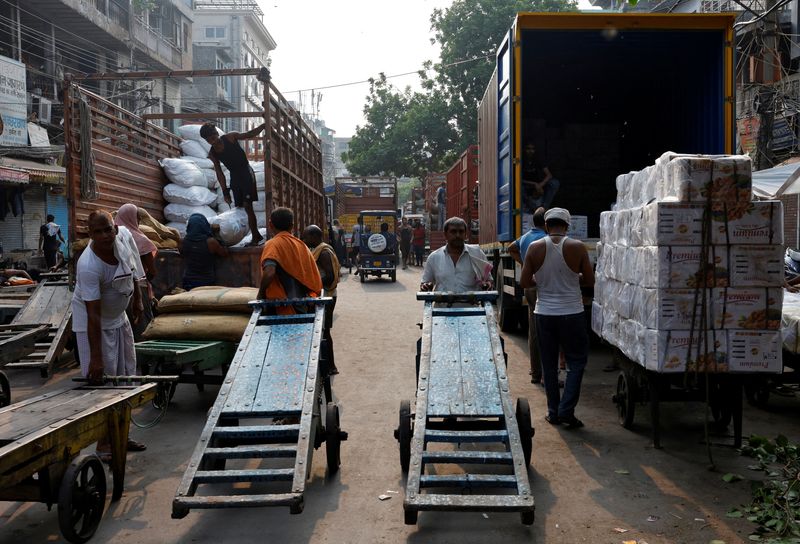NEW DELHI (Reuters) -India’s government has taken a more cautious stance than private economists on the outlook for growth this fiscal year, predicting the world’s fifth-largest economy will expand between 6.5% and 7%.
The projection from the finance ministry’s economic division is lower than the 8.2% robust growth seen in the year ended March and a weaker range than estimates of 6.8% to 7.2% from economists. The central bank is also more upbeat, forecasting growth of 7.2%.
“The Indian economy is on a strong wicket and stable footing, demonstrating resilience in the face of geopolitical challenges,” Chief Economic Adviser V. Anantha Nageswaran wrote in the preface to the annual Economic Survey.
However, after good growth in the last three years, fears of cheaper imports from countries with excess capacity could limit the formation of private capital, he said.
The 476-page report was tabled in parliament by Finance Minister Nirmala Sitharaman on Monday ahead of presenting the federal budget on Tuesday.
Prime Minister Narendra Modi, whose party fell short of a majority in the general election, is widely expected to boost tax collection and use a record $25 billion dividend from the central bank to ramp up budget spending to address concerns over uneven economic growth.
The report said inflationary pressures had moderated in most economies in line with a decline in commodity prices and an easing of supply chain pressures. It cited the International Monetary Fund’s global growth forecast of 3.2% for 2024.
But any escalation of geopolitical conflicts could revive inflationary pressures and could influence the Reserve Bank of India’s (RBI) monetary policy stance, it said.
RBI’s monetary policy committee last month kept the repo rate on hold at 6.50%, noting monetary conditions could remain tight for some time while it looked at further curbing inflationary pressures.
Annual retail inflation marginally rose to 5.08% in June, from 4.75% in the previous month due to high food prices. Food inflation hit 9.36% in June.
The report also said that India’s inflation targeting framework should consider targeting inflation excluding food, as higher food prices tend to be supply-induced than demand-induced.
Although food prices were high, headline inflation was largely under control, the report added.
MEDIUM-TERM GROWTH
The Indian economy is capable of growing at a rate of 7%-plus on a sustained basis in the medium term if structural reforms are implemented, it also said.
It identified boosting private investment, strengthening small businesses and agriculture, along with bridging the gap between education and employment as areas that need policy focus.

It added that the implementation of revamped labour legislation needs to be expedited to create a more conducive environment for job creation.
“The Indian economy needs to generate an average of nearly 7.85 million jobs annually until 2030 in the non-farm sector to cater to the rising workforce,” the report said.
To read the full article, Click Here

